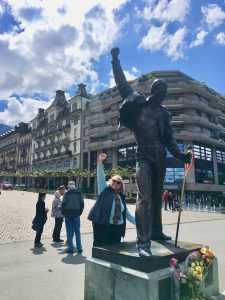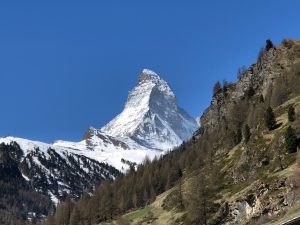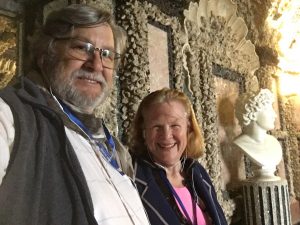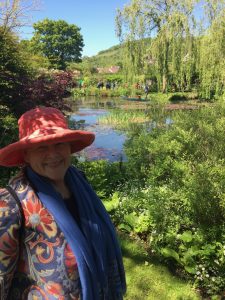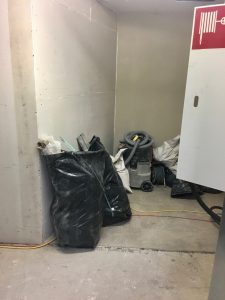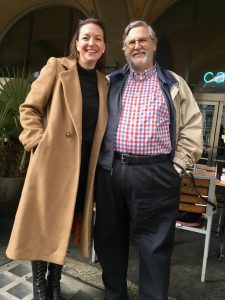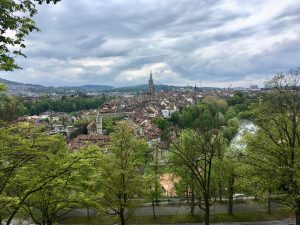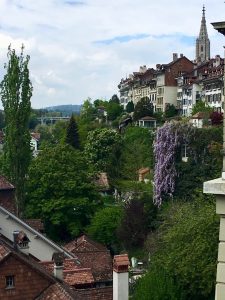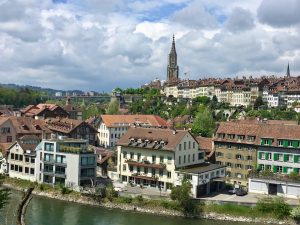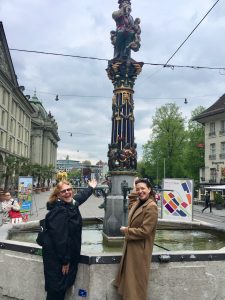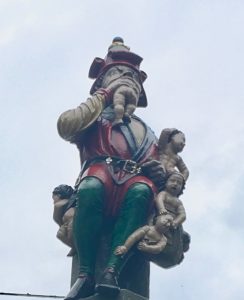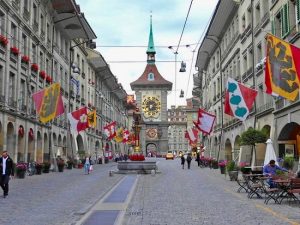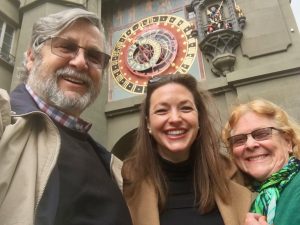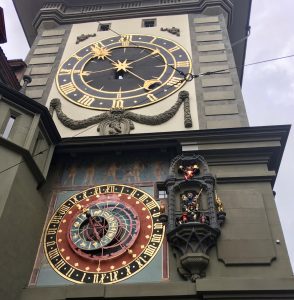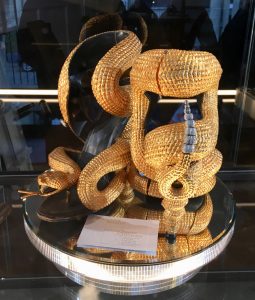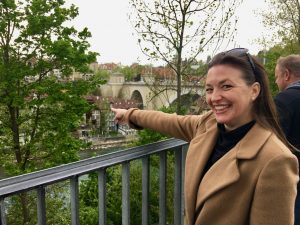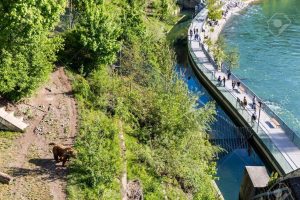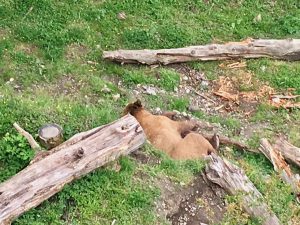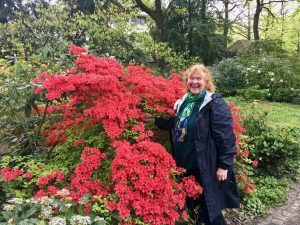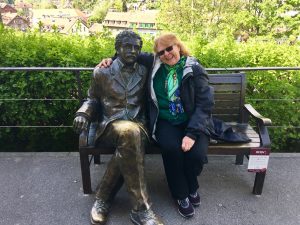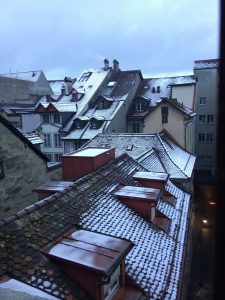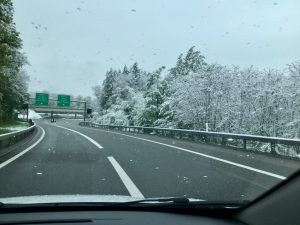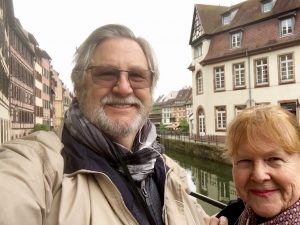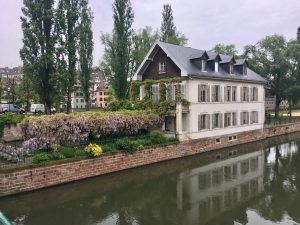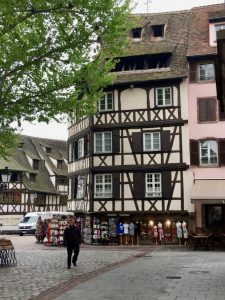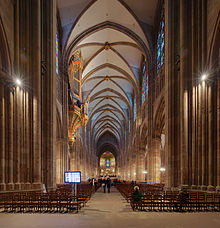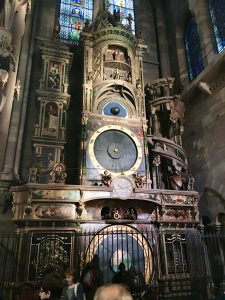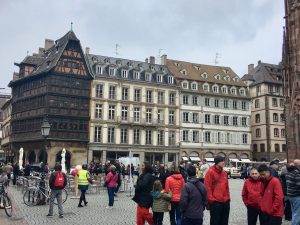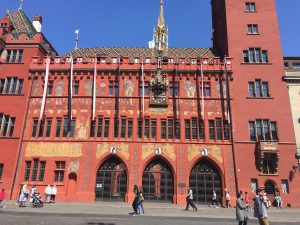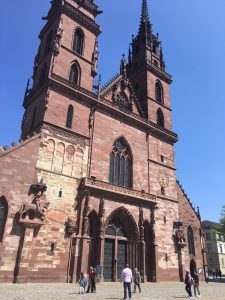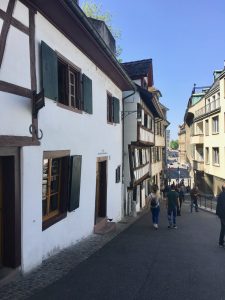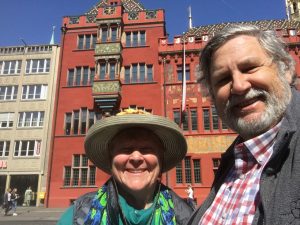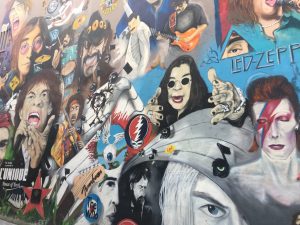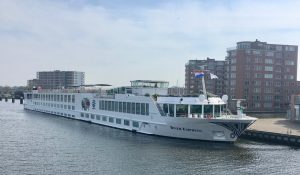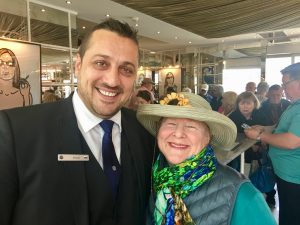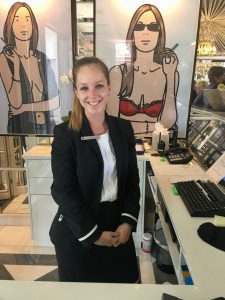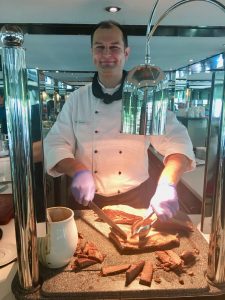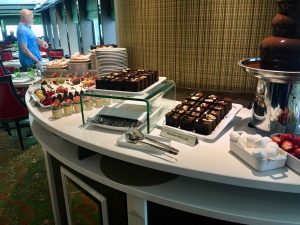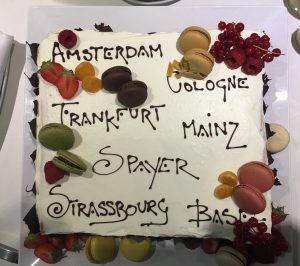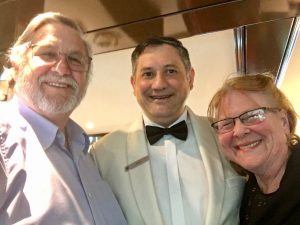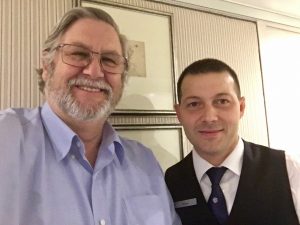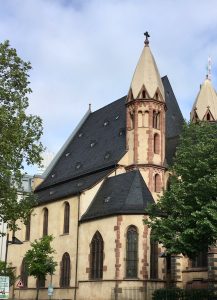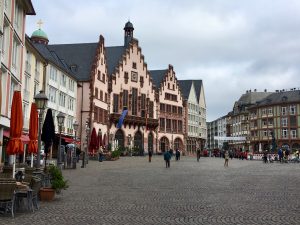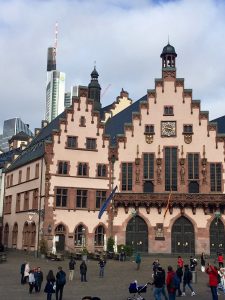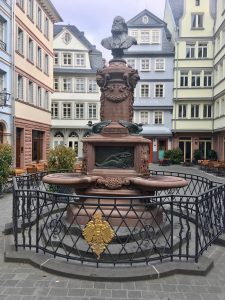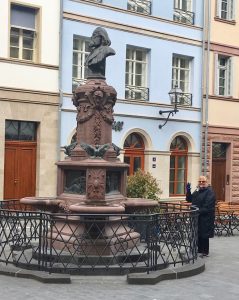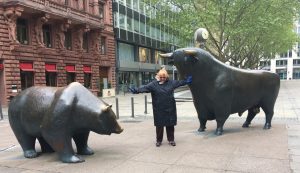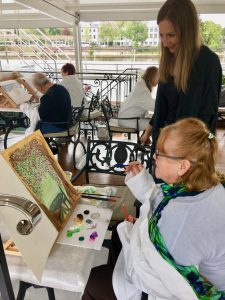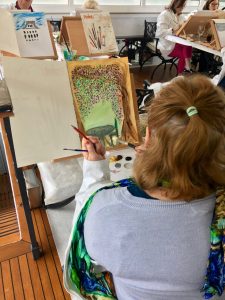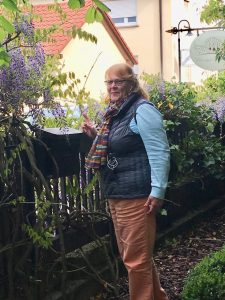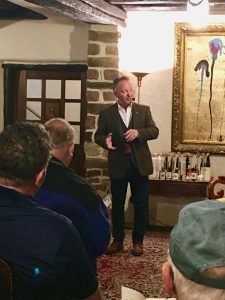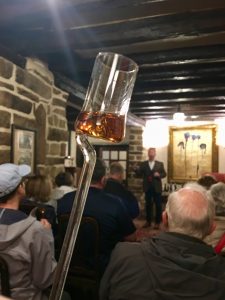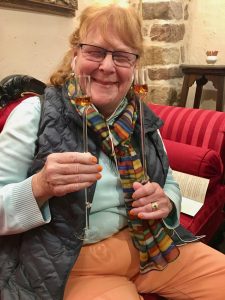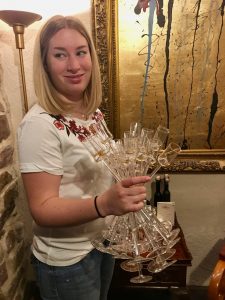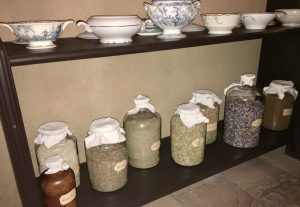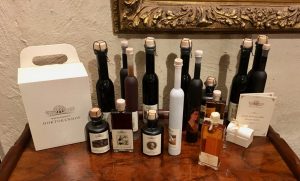After visiting in Bern we drove to Geneva,the starting point for our Insight Tours – Glorious Switzerland adventure. This fit perfectly into our schedule and filled the gap between the end of our river cruise and our departure on the 15th of May. Neither of us had really been to Switzerland and signing on for this tour seemed a good way to get an overview of the Country.
Geneva – Situated along the banks of, you guessed it, Lake Geneva is the Headquarters of Europe’s United Nations,
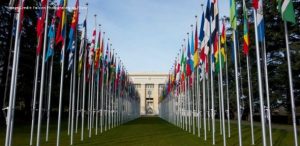
the Red Cross, UNICEF and a number of other world organizations. Aside from all the. international organizations, it is also the headquarters for some of the best known watchmakers in the world including Rolex, Patek Philippe, Raymond Weil and many others. It also has a very large banking operation so the City isn’t lacking for money.
Our first evening included a welcome dinner at a local restaurant (did I mention we were staying in a 5 star hotel? Hotel d’Angleterre which was wonderful) and tastes of local dishes. Dinner included adult beverages which is always nice.
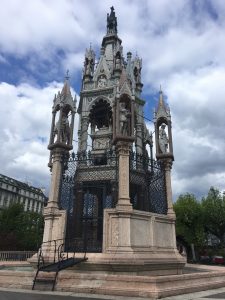
The following morning on the coach (that sounds so much better than bus doesn’t it?) off we went. First stop was The International Monument to the Reformation but usually just called the Reformation Wall.


This honors individuals, events and documents of the protestant Reformation depicted as statues and bas-reliefs on the wall.
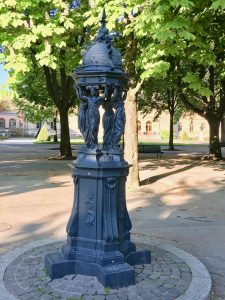
This is in a lovely park and could certainly get crowded so it was good we were there early.
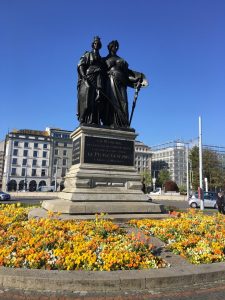
After a stop at the Floral Clock

we drove by many of the headquarter buildings for the various world organizations.
After leaving Geneva, and driving along the shores of the lake, we stopped at a medieval castle, Chillon. This Castle is a fortress celebrated for its beauty and is widely regarded as one of the best-preserved medieval castles in Europe.
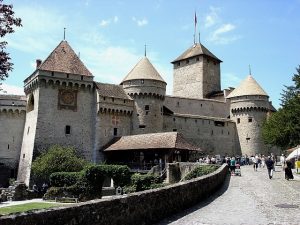
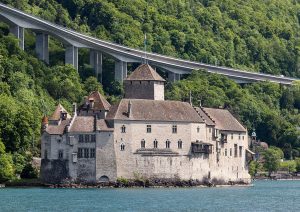
The Castle is the former home of the Counts of Savoy (Major power for a very long time in the middle ages) and was immortalized by Byron’s poem, ‘Prisoner of Chillon’. It sits on an outcropping of rock along the banks of the Lake and was a defensive installation and also a place where taxes were collected for goods passing along the road on one side and the river on the other.

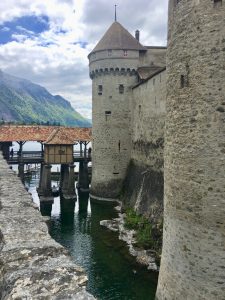
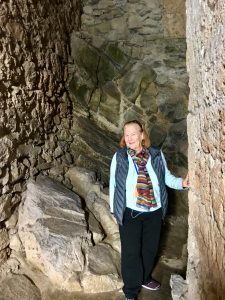
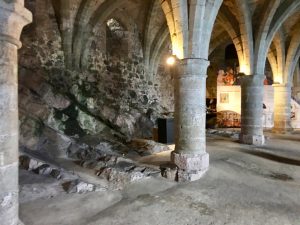
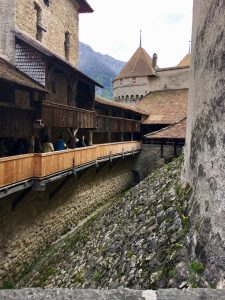

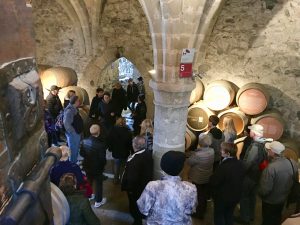
Our guide toured us through the structure and pointed out a number of very interesting areas. It was interesting to see the construction of the place and how well it has been preserved over the years.
After touring the castle, we continued our travels around the lake ending up in Montreux.
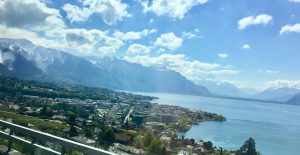
Now all I really know about Montreux is they have a world class Jazz Festival each year and have been doing it since 1967 making it possible the longest running festival of its kind and to which I would love to go.

This event is 2 weeks of music along the Lake and maybe sometime I’ll be able to attend. There are several other music events throughout the year and the place really is beautiful as it is situated on the Lake with the Alps all around.
Last year a movie was released called Bohemian Rhapsody. I hadn’t seen it prior to being in Montreux but I soon learned the movie was about Freddie Mercury – lead singer for Queen. During the ‘80’s I wasn’t a Queen fan so really had no clue about Freddie or knew anything about him. Well, turns out he spent a lot of time in Montreux and after his death the City erected a statue in his honor
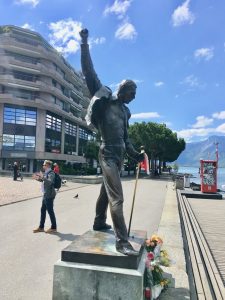
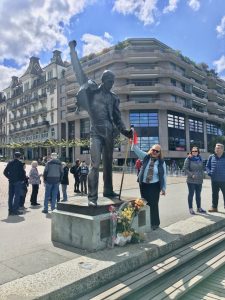
and there is a Freddie Mercury Montreux Memorial Day festival that has been on-going since 2003. So, of course, we had to stop at the Statue had take a picture or two.
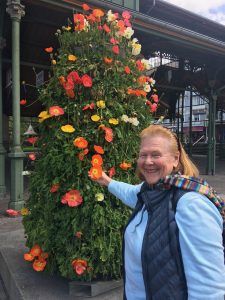
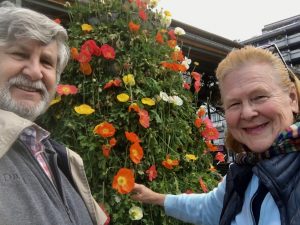
After walking around and taking some lovely pictures we had a very nice Italian lunch.

After leaving Montreux we were off to Zermatt and a visit to the Matterhorn.
